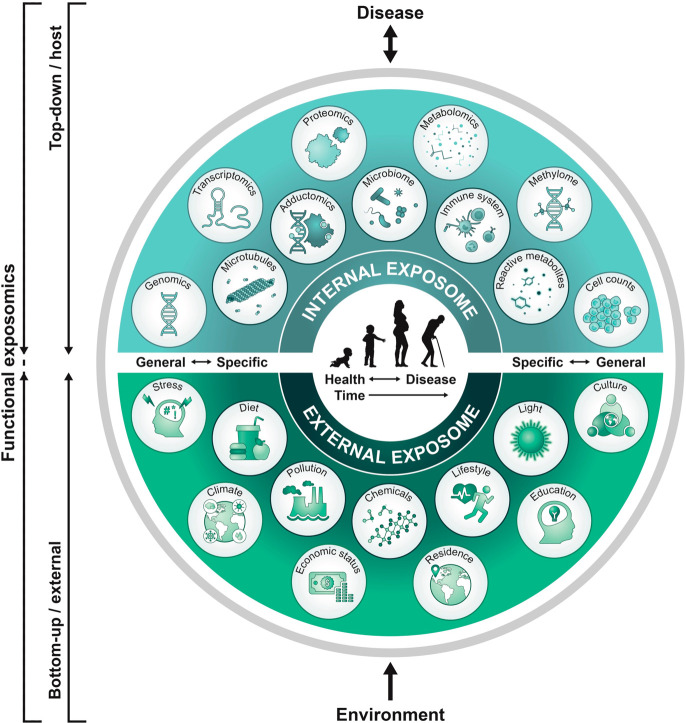Figure 1.
Functional exposomics approach to study the exposome. In the top-down approach, molecular epidemiology studies focus on exposure (e.g., small molecule biomarkers of exogenous compounds, protein adducts, reactive metabolites) and biological response profiles (e.g., metabolomics, gene expression, methylation) within the host using biospecimens. This approach can generate hypotheses regarding exposure–disease and exposure–response relationships but does not necessarily capture direct measures of exposure. In the bottom-up approach, comprehensive data on environmental exposures are collected through surveys, sensors, or trace analytical chemistry in environmental samples (external exposures) or in biospecimens. This can generate hypotheses on effects but does not necessarily investigate the effect. We propose that a functional exposomics study bridges these two approaches and consists of the biologically active exposures present in an individual and specifically examines associations between environmental exposure and biological effect.

